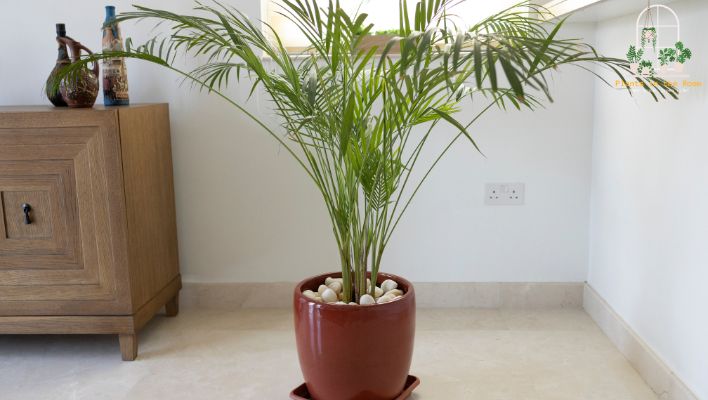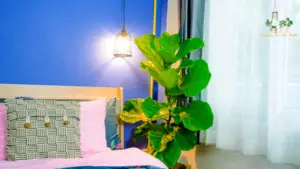This article covers the following areas –
- Choosing the Right Large Indoor Plant
- Positioning Your Large Indoor Plant
- Maintaining Your Large Indoor Plant
- In Conclusion
Plants’ remarkable ability to rejuvenate a space has become essential to interior design. They bring an element of life, color, and freshness to indoor spaces that few other décor elements can match. In this guide, I’ll be focusing on large indoor plants and how they can make a substantial design statement in your home.
To make a statement with large indoor plants, consider your space’s size and light availability, choose appropriate plant types, position them strategically to enhance your room’s aesthetic, and follow regular maintenance practices. These steps ensure the plant’s health and enhance your interior decor.
Keep reading for the detailed guide that elaborates on each step, offering tips on choosing the right plant, understanding plant types, and suggestions on positioning your plant to amplify your room’s aesthetic appeal.
Choosing the Right Large Indoor Plant
Incorporating large indoor plants into your home decor is an art and science in itself. The right indoor plant can transform your living space into a vibrant, rejuvenating sanctuary. However, to pick the perfect one, there are a few important considerations – the available space, light, humidity, your personal style, and of course, the plant’s care requirements.
Making the right choice enhances your home aesthetics and ensures that the plant grows and thrives well in the indoor environment. Let’s dive deeper into how you can make a well-informed decision when choosing your next green roommate.
Consider Your Space
Before stepping into the plant world, observing and understanding your living space is the first step. Space analysis is crucial in picking the right plant, as it factors in room size, available lighting, and the overall layout. In essence, you are selecting a plant that will cohabitate with you and should be a good fit for both parties.
Size and Proportion
When it comes to indoor plants, size matters. Your plant should not be too overwhelming or too understated for your room. For instance, large plants in small spaces might dwarf the room, making it look cluttered, whereas small plants in larger rooms might not be noticeable enough to make an impact. Therefore, the size of your plant should be proportionate to the size of your room.
For example, a large living room with high ceilings could accommodate a tall and broad Fiddle Leaf Fig, while a compact studio apartment might be more suited for a medium-sized Rubber Plant.
Light Requirements
Another vital aspect to consider is the amount of light your space receives. Most indoor plants originate from tropical regions, under the canopies of larger trees. Thus, they are adapted to grow in filtered light rather than direct sunlight.
Some plants, like the Snake Plant or ZZ Plant, can handle lower light conditions, while others, like the Monstera Deliciosa, thrive in bright, indirect light.
Table 1: Light Requirements for Popular Large Indoor Plants
| Plant Type | Light Requirement |
|---|---|
| Fiddle Leaf Fig | Bright, indirect |
| Monstera Deliciosa | Moderate to bright, indirect |
| Snake Plant | Low to moderate |
| ZZ Plant | Low to bright, indirect |
| Rubber Plant | Moderate, indirect |
The direction your windows face and the amount of natural light you receive daily will help determine the type of plant you can sustain. If your room is short on natural light, you can still consider plants that thrive in low-light conditions or use grow lights to supplement the lack of natural light.
Humidity and Temperature
Don’t forget to consider your space’s humidity and temperature. A humid-loving plant may not be the best choice if your room is often dry due to heating or air conditioning. Conversely, a cactus or succulent would be unsuited to a damp bathroom environment.
By evaluating all these factors, you are more likely to select a plant that fits your space and can thrive within it. This careful consideration will ensure that your large indoor plant adds to your room’s aesthetic and doesn’t become a source of stress due to inappropriate conditions.
Understand Plant Types
Once you have analyzed your space and gauged your room’s light, humidity, and size, it’s time to delve into the world of indoor plants. There’s an immense variety of indoor plants, each with its unique charm, growth habits, and care requirements. When choosing the right plant, the idea is to match the plant’s natural needs with the conditions you can provide in your home. Below, we explore some popular large indoor plants, their origins, unique characteristics, and care needs.
1. Fiddle Leaf Fig
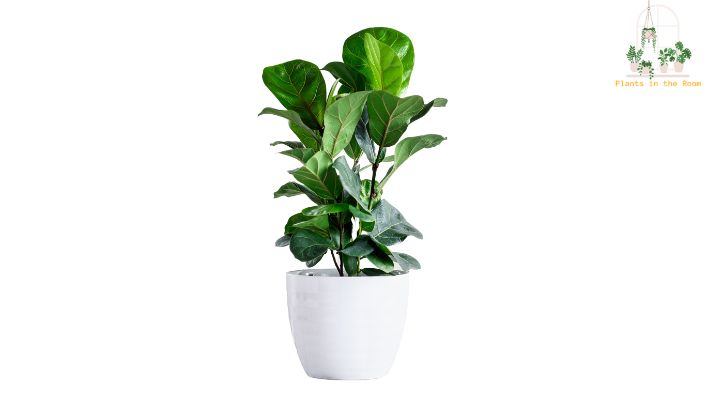
The Fiddle Leaf Fig, also known as Ficus Lyrata, hails from the tropical regions of West Africa. This plant is a popular choice among enthusiasts and interior designers, thanks to its large, glossy, and uniquely shaped leaves that resemble a fiddle – hence the name.
Fiddle Leaf Figs can grow tall and are perfect for spaces with high ceilings. In terms of care, this plant loves a lot of indirect sunlight. So, a spot near a west or south-facing window would be ideal. Watering should be done when the top inch of the soil feels dry to the touch, usually once every 1-2 weeks. However, it’s important to ensure that the plant is not overwatered, as it can lead to root rot.
2. Monstera Deliciosa
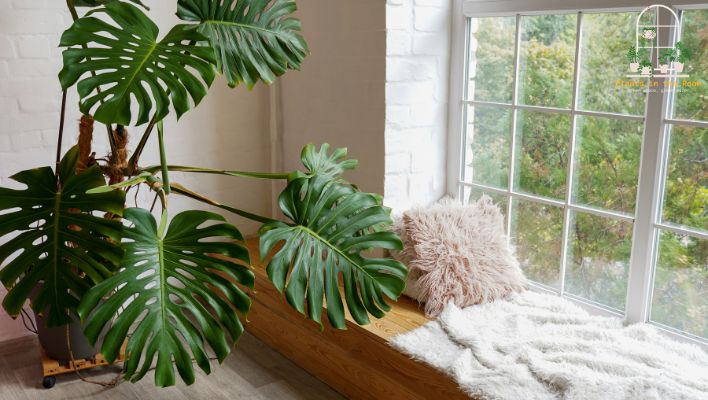
Monstera Deliciosa, also known as the Swiss cheese plant, is a favorite for its dramatic, holey leaves. Originating from the rainforests of Central America, this plant can make a striking statement in any space.
It enjoys bright, indirect light but can also tolerate medium light. This adaptability makes it a versatile choice for most homes. Monstera Deliciosa prefers a thorough watering every 1-2 weeks, allowing the soil to dry out between waterings.
3. Rubber Plant
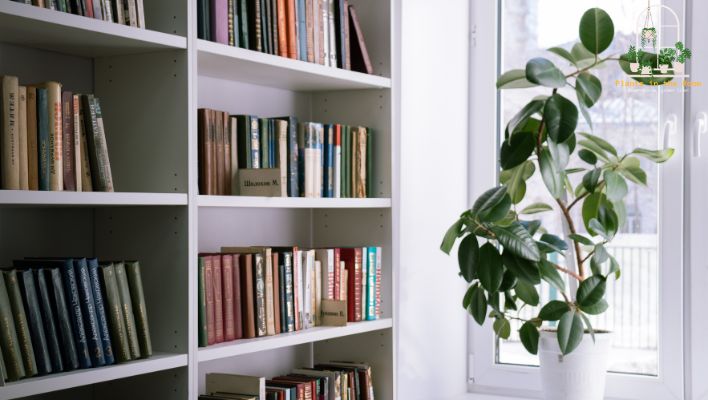
The Rubber Plant, or Ficus Elastica, is known for its dark green, shiny leaves that can add a touch of elegance to any room. This plant is a hardy variety that can handle lower light conditions and a wide range of temperatures.
The Rubber Plant prefers to dry out between waterings, unlike the previous two plants. When the top half of the soil is dry, it’s time to water your plant.
4. Dracaena
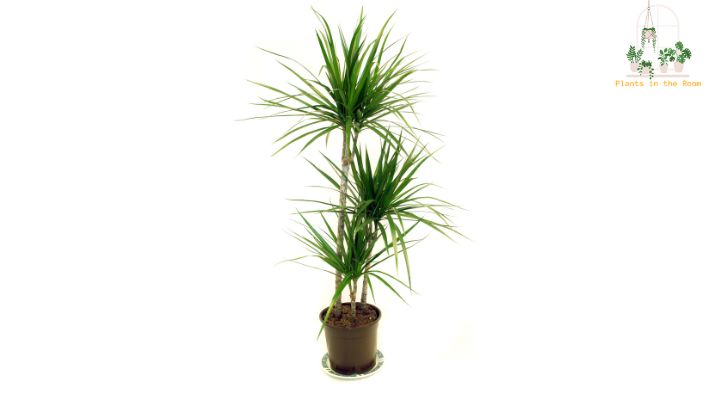
With its tall, slender profile and dramatic foliage, Dracaena is another excellent choice for indoor plant enthusiasts. There are several varieties of Dracaena, each with a unique leaf pattern and color, allowing you to pick one that best matches your home decor.
Dracaena prefers indirect light but can also tolerate lower light conditions, making it a versatile plant. It prefers to dry out a bit between waterings.
Table 2: Care Requirements for Popular Large Indoor Plants
| Plant Type | Light Requirement | Watering Requirement |
|---|---|---|
| Fiddle Leaf Fig | Bright, indirect | Regular, when top inch of soil is dry |
| Monstera Deliciosa | Moderate to bright, indirect | Every 1-2 weeks, allow soil to dry between watering |
| Rubber Plant | Moderate, indirect | When top half of soil is dry |
| Dracaena | Low to moderate, indirect | When top half of soil is dry |
Understanding the different types of indoor plants and their requirements can help you make an informed decision that will ensure the health and growth of your plant while adding an aesthetic appeal to your space.
Positioning Your Large Indoor Plant

After selecting the perfect plant that suits your space and lifestyle, positioning it in your home is the next crucial step. The placement of a plant impacts its health and growth and can dramatically alter the aesthetics of your living space. Strategic positioning can make your large indoor plant the room’s focal point or a tasteful addition that blends in with the overall decor.
Understanding how to leverage your plant’s visual weight and unique characteristics can turn your home into an indoor oasis. Let’s explore the different ways you can position your large indoor plant to make a statement.
Corner Spaces
When it comes to decorating with large indoor plants, corners are often underutilized. However, these nooks present the perfect opportunity to display your greenery. Large indoor plants in corner spaces can turn these oft-forgotten areas into vibrant, lively spots, infusing your room with a sense of freshness and elegance.
Choose the Right Plant
Tall, vertical-growing plants like the Snake Plant or Dracaena can be excellent choices for corner spaces. Their growth pattern allows them to reach toward the light without taking up too much horizontal space.
Create a Visual Balance
Placing a large indoor plant in a corner can also help create a visual balance in the room. For example, if you have a room with a dominant element like a large painting or a hefty piece of furniture, a tall plant in the opposite corner can counterbalance the room’s visual weight.
Stand-Alone Pieces
Large indoor plants like a mature Monstera Deliciosa or Fiddle Leaf Fig can command attention on their own due to their substantial size, unique foliage, and imposing presence. Treating these plants as stand-alone pieces can create a stunning focal point in your room.
Focusing the Eye
Position these plants in areas of the room where you want to draw the viewer’s attention. This could be near a window, where the plant gets adequate light, or by a seating arrangement where guests can admire the plant up close.
Enhancing Room Architecture
You can also use these plants to enhance your room’s architecture. For instance, a large plant near an archway or against a pillar can highlight these architectural features.
Grouping Plants
Another strategy for positioning large indoor plants is to group them with smaller plants. This creates a ‘plant corner’ or ‘green spot’ that can add a mini-jungle vibe to your space.
When grouping plants, consider their heights, colors, and textures. You can create a visually appealing arrangement by placing the tallest plant at the back, the medium-sized in the middle, and the smallest in front. This arrangement allows each plant to receive adequate light and creates a sense of depth in your space.
Whether you place your plant in a corner, use it as a stand-alone piece, or group it with other plants, remember that the key is to choose a location where your plant receives the right amount of light and where its aesthetics complement your living space. With the right positioning, your large indoor plant can turn any ordinary room into an extraordinary one.
Maintaining Your Large Indoor Plant

The journey with your large indoor plant doesn’t end at its purchase and positioning. Regular and proper maintenance is the key to a thriving, beautiful plant. Like any living organism, your plant has its specific needs, including watering, light, and nutrition.
Keeping these needs in mind and maintaining a regular care schedule ensures that your plant grows strong and healthy, adding beauty to your space for a long time. This section will discuss some key aspects of large indoor plant maintenance, from watering and lighting to fertilizing and pruning.
Regular Watering
Just like humans require a balance in our water intake, each plant species has unique watering requirements. Striking the right balance is crucial, as both over-watering and under-watering can lead to an unhealthy, struggling plant.
Understanding Water Requirements
The water requirements of your large indoor plant will depend on its species, its size, and the environment it’s in. As a general rule, most large indoor plants prefer their soil to dry out completely between waterings. Over-watering can lead to waterlogged soil and root rot, while under-watering can cause the plant to dry out and wilt.
For instance, a Fiddle Leaf Fig needs watering when the top inch of the soil becomes dry, while a Rubber Plant prefers to dry out more between waterings. Therefore, it’s crucial to understand your plant’s water requirements and adjust your watering schedule accordingly.
Check the Soil
Sticking your finger into the soil is a simple way to check if your plant needs water. If the top 1-2 inches of soil feels dry, it’s time to water your plant. However, if the soil feels damp, it’s best to wait a few more days before watering.
Adequate Sunlight
Sunlight plays a vital role in the health and growth of your plant. Like watering, the amount and type of light your plant needs will depend on its species.
Understanding Light Requirements
Most large indoor plants originate from tropical environments, where they grow under the canopy of larger trees. Therefore, they need a good amount of indirect light. However, some plants, like the Dracaena, can thrive even in low-light conditions. Understanding your plant’s light requirements will ensure that it grows healthily and maintains its vibrant color.
Adjusting to Light Conditions
If your plant is not getting enough light, its growth may slow down, and its leaves might turn pale. On the other hand, too much direct sunlight can cause the leaves to scorch. If you notice any of these signs, you may need to move your plant to a different spot to adjust its light exposure.
Fertilizing and Pruning
Plants, like all living things, need nutrition to grow. Fertilizing your plant provides it with the nutrients it needs. On the other hand, pruning helps maintain the plant’s shape, promotes growth, and removes any dead or dying leaves.
Fertilizing Your Plant
Large indoor plants should generally be fertilized during their growing season, which is usually in spring and summer. You can use a balanced, water-soluble fertilizer for this. Remember to follow the package instructions for the correct dosage. Over-fertilizing can be harmful to your plant.
Pruning Your Plant
Pruning involves trimming your plant to maintain its shape and size and remove any dead or unhealthy leaves. It helps the plant focus its energy on new growth. You can use a pair of clean, sharp scissors or pruning shears for this task.
Regular maintenance of your large indoor plant is a rewarding task. It ensures your plant’s health and offers you an opportunity to engage with nature, fostering a sense of peace and mindfulness.
In Conclusion
Large indoor plants can uniquely charm your interiors, transforming your space into a vibrant and lively sanctuary. Whether you’re a seasoned plant parent or a novice just starting, this guide offers practical tips to help you make a statement with your large indoor plants.
Every step, from selection and positioning to maintenance, is vital in your plant parenting journey. With proper care and attention, your indoor plants can serve as beautiful, living pieces of décor, bringing a bit of nature right into your living room.

